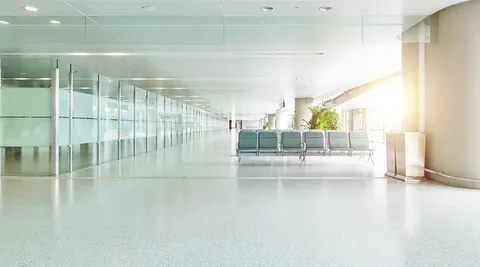Hospitality Flooring Market: Analyzing the Shift Toward Biophilic Design in Hospitality Spaces

The hospitality flooring market is currently experiencing a notable shift toward biophilic design, which emphasizes the connection between indoor environments and the natural world. This design philosophy not only enhances aesthetic appeal but also significantly impacts guest experience and well being. As hotels and hospitality venues seek to create inviting, healthy, and memorable spaces, the integration of biophilic elements into flooring choices has emerged as a critical trend.
Market Drivers for Biophilic Flooring
Several factors are driving the shift toward biophilic design in the hospitality flooring market:
1. Growing Guest Awareness of Wellness
As awareness of mental and physical wellness increases, travelers are seeking accommodations that support their health. The desire for environments that reduce stress and foster relaxation is influencing design decisions across the hospitality industry. Biophilic design, with its focus on natural elements, aligns perfectly with this trend, making it a preferred choice for modern hotel operators.
2. The Rise of Sustainable Practices
Sustainability is a cornerstone of biophilic design. Hotels are increasingly motivated to adopt eco-friendly practices, not only to meet regulatory requirements but also to align with guest expectations. Flooring materials derived from sustainable sources, such as bamboo or reclaimed wood, exemplify this commitment. By choosing sustainable options, hospitality venues can enhance their brand image as environmentally responsible, appealing to eco-conscious travelers.
3. Enhanced Aesthetic Appeal
The integration of biophilic design into flooring choices enhances the overall aesthetic of hospitality spaces. Natural materials and designs can create a warm, inviting atmosphere that differentiates hotels in a competitive market. Flooring that incorporates organic patterns, textures, and colors can elevate the design narrative and contribute to a unique guest experience.
Market Intelligence: Flooring Solutions for Biophilic Design
To effectively embrace biophilic design, hotel operators must be informed about suitable flooring options that support this trend. Key flooring solutions include:
1. Natural Wood and Bamboo
Natural wood flooring is a timeless choice that evokes warmth and connection to nature. Bamboo, in particular, is an increasingly popular option due to its rapid renewability and sustainability. Both materials can enhance the organic feel of a space, making them ideal for areas such as lobbies, guest rooms, and dining spaces.
2. Stone and Tile
Natural stone flooring, such as slate or limestone, can create a sophisticated ambiance while reinforcing the connection to the outdoors. Additionally, ceramic and porcelain tiles designed to mimic natural stone provide an attractive and durable alternative that is easy to maintain.
3. Resilient Flooring Options
Luxury vinyl tile (LVT) and other resilient flooring products are gaining traction as practical solutions that can replicate the look of natural materials. Advances in printing technology allow for a wide range of designs that evoke wood or stone, while providing the durability and ease of maintenance required in hospitality settings.
4. Biophilic Patterning
Incorporating patterns inspired by nature such as floral or leaf motifs into flooring can also enhance biophilic design. These patterns can create focal points in public spaces or add visual interest in guest rooms, reinforcing the natural theme throughout the property.
The Impact on Guest Experience
The shift toward biophilic design in flooring is not merely a trend; it has profound implications for guest experience. Spaces designed with biophilic principles tend to be more inviting and relaxing, encouraging guests to linger longer and enjoy their surroundings. The incorporation of natural elements can lead to improved mood and overall satisfaction, ultimately driving repeat visits and positive word-of-mouth.
- Art
- Causes
- Crafts
- Dance
- Drinks
- Film
- Fitness
- Food
- Games
- Gardening
- Health
- Home
- Literature
- Music
- Networking
- Other
- Party
- Religion
- Shopping
- Sports
- Theater
- Wellness


